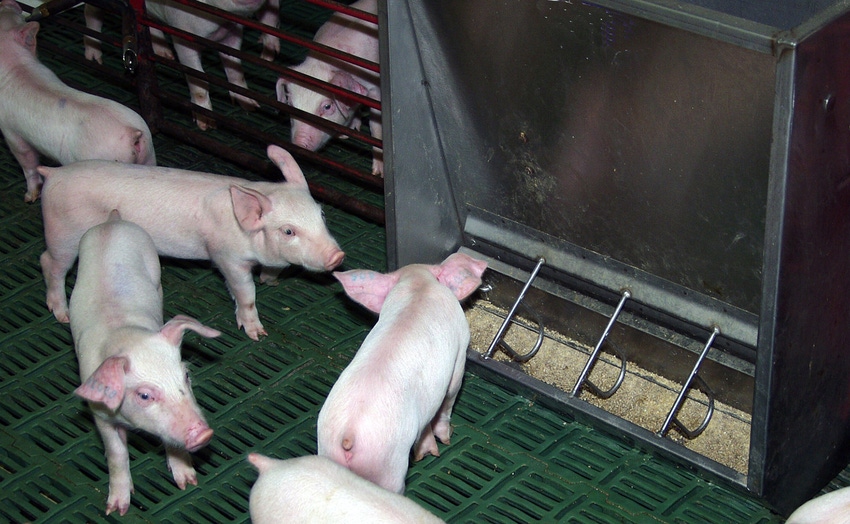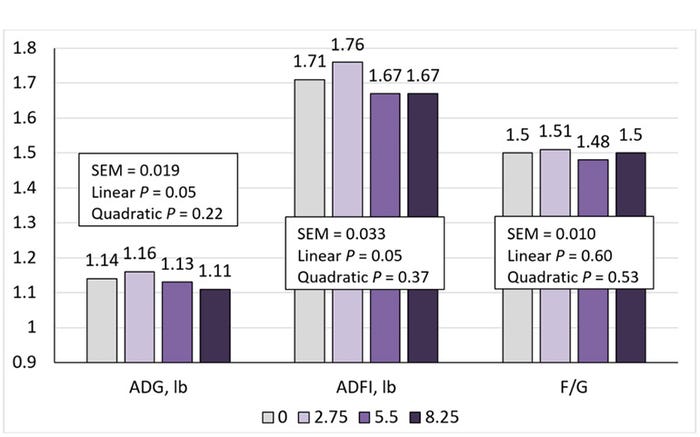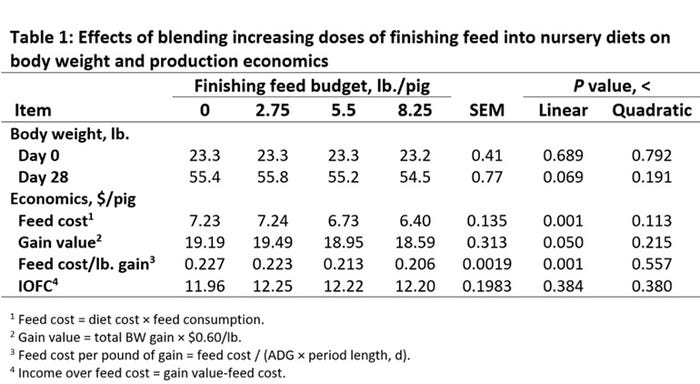What should you do with leftover finishing feed in wean-to-finish barns?
This research offers a model for wean-to-finish production systems to evaluate the strategy of managing leftover finisher feed.
December 26, 2018

By Fangzhou Wu, Mike Tokach, Jason Woodworth, Joel DeRouchey, Steve Dritz and Robert Goodband, Kansas State University; and Chad Hastad, New Fashion Pork
In wean-to-finish pig productions, one of the challenges in feed management is determining what to do with feed remaining in the bin at the end of the finishing phase. Because the precision of budgeting finishing feed is based on predicted feed intake and closeout dates is not perfect, there is often feed remaining in the bins. These leftover finishing feeds must be reclaimed and transported to another site or fed to the next group of pigs.
However, in a wean-to-finish barn, the next group happens to be newly weaned nursery pigs. A common strategy is to blend leftover finishing feed into the later stage nursery diets, which requires prolonged feed storage and may result in blending of the early nursery phase diets because tandem bins cannot be used until the finishing feed has been fed.
In two studies, we evaluated the strategy of feeding leftover finisher feed in a five-phase nursery program. The first study investigated the timing of feeding late-finishing feed. Results suggested that pig growth performance was influenced regardless of phase when blended finishing and nursery diets were fed. However, the younger the pigs were fed the finishing feed, the greater negative impact was observed. For example, blending 5.5 pounds per pig (six tons in a 2,200-head barn) finishing feed into Phase 3 (approximately 28 pounds bodyweight) nursery diet resulted in little impact on overall growth performance. The next question is to determine the maximum amount of finishing feed that can be blended with Phase 3 nursery diets without affecting pig performance. Therefore, the second study was conducted to determine the dose effects of increasing leftover finishing feed from zero to 8.25 pounds per pig on nursery pig growth performance and production economics.
In this trial, 1,260 pigs were fed commercial nursery diets in a five-phase feeding program with Phase 1 (5.5 pounds) and Phase 2 (4 pounds) fed prior to the start of the experiment. At the beginning of Phase 3 (approximately 23 pounds bodyweight), pigs were assigned to four treatments involving increasing amounts of late-finishing feed (zero, 2.75, 5.5 and 8.25 pounds per pig) blended into a Phase 3 nursery diet. These treatments simulated the scenarios when zero, three, six and nine tons of late-finishing feed were left on a 2,200-head barn.
Compared with normal nursery diets, the last finisher diet is deficient in amino acids, calcium and phosphorus concentrations for nursery pigs and did not contain growth-promoting levels of zinc, copper and phytase. To mimic the feed flow in bins, blended diets were delivered in the sequence of finishing feed, 50% finishing and 50% standard blended diet, and standard nursery diet.
Not surprisingly, immediate decrease in growth performance was observed as soon as the finishing feed was introduced. However, once the finishing feed budgets were completed, compensatory gain occurred. Pigs that were budgeted 2.75 pounds per pig finishing feed completed their finishing feed budgets in four days. These pigs were able to fully compensate for average daily gain and average daily feed intake compared with those that did not receive finishing feed (Figure 1).

Figure 1: Effects of blending increasing doses of finishing feed into nursery diets on growth performance.
However, pigs that received 5.5 and 8.25 pounds per pig finishing feed completed their finishing feed budgets around Day 8 and 11, respectively. They experienced prolonged and severe nutrient deficiency and, therefore, resulted in decreased overall ADG and ADFI compared with those receiving zero or 2.75 pounds per pig of late-finishing feed. Overall F/G was not affected by feeding the budgeted amounts of finishing feed.
We performed economic analysis based on a gain value of $0.60 per pound and feed prices of $521, $449, $389, $297, $265 and $172 per ton of nursery Phase 1, 2, 3, 4, 5, and late-finishing diets, respectively. Feed cost, gain value and feed cost per pound of gain linearly decreased as finishing feed budget increased from zero to 8.25 pounds per pig (Table 1). However, no evidence of differences in income-over-feed-cost was observed among treatments.

In summary, feeding leftover finishing feed to nursery pigs negatively affected growth performance, but pigs were able to partially compensate for ADG after the finishing feed budget was concluded. In the feeding program investigated herein, blending more than 2.75 pounds per pig of finishing feed with Phase 3 (initially 23 pounds bodyweight) nursery diets decreased ADG and ADFI, but did not affect income-over-feed-cost. This research offers a model for wean-to-finish production systems to evaluate the strategy of managing leftover finisher feed.
You May Also Like


